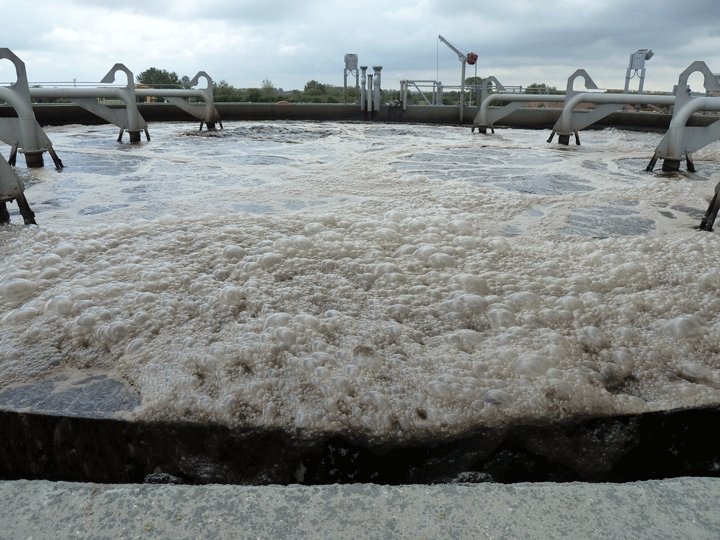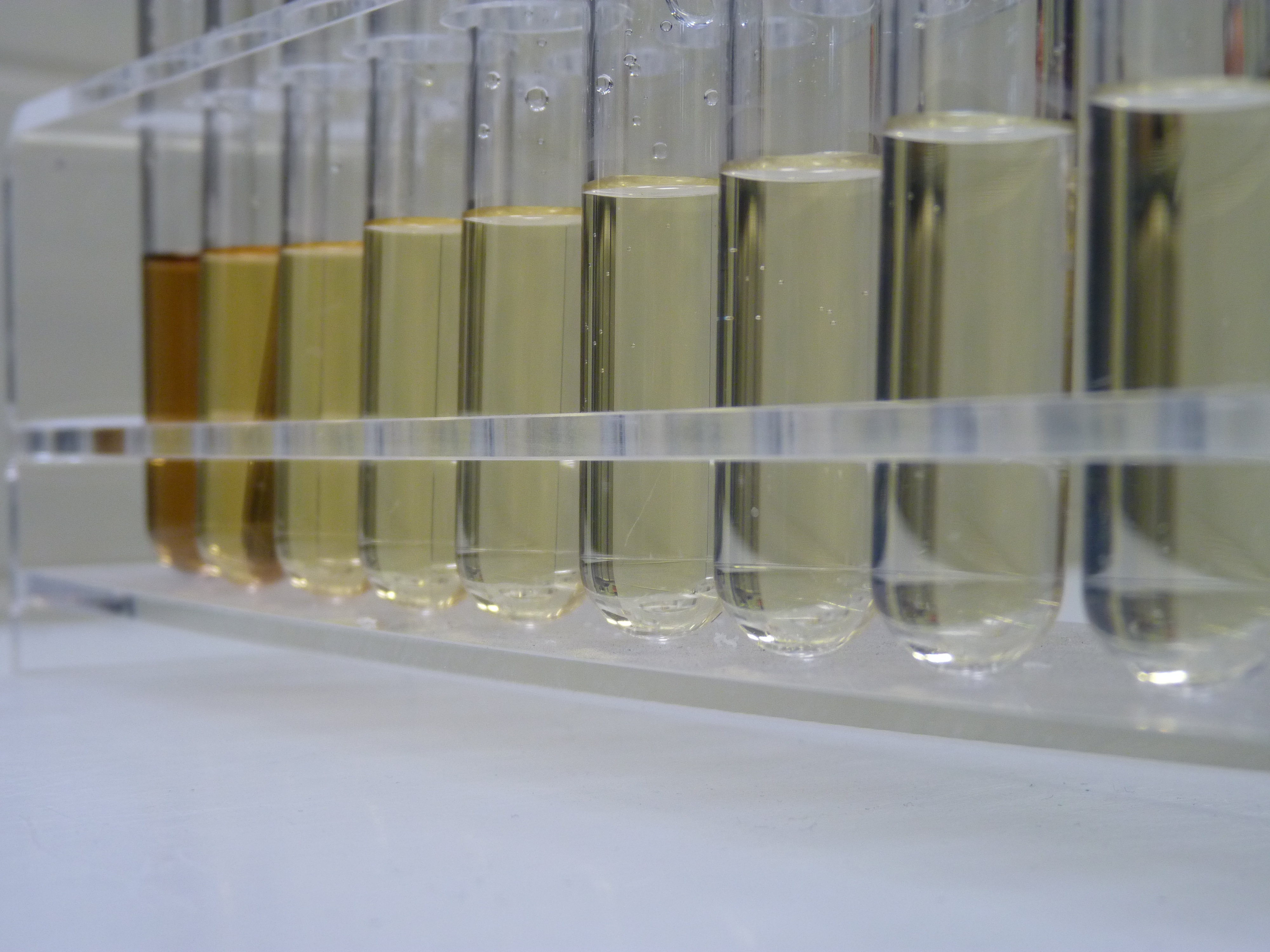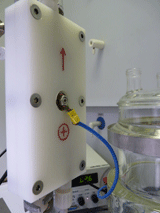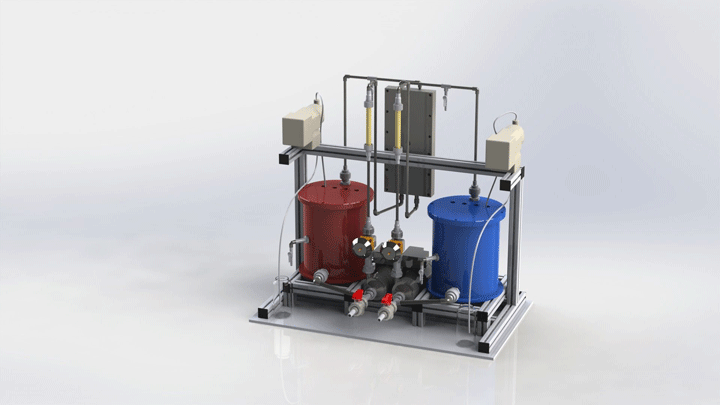Combination of electrochemical oxidation and reduction
Together with European partners from industry and research, Fraunhofer IGB has developed an electrochemical process within the EU-funded CleanLeachate project that enables reliable treatment of landfill leachate without having to add auxiliary substances to the wastewater. Through electrochemical oxidation at the reactor anode and subsequent reduction at the reactor cathode, ammonium as well as organic water constituents and organically bound halogens can be eliminated from the landfill leachate. In contrast to membrane filtration, electrochemical treatment completely removes the water constituents. No residual substances have to be disposed of.
Divided electrolysis cell
For oxidation and reduction, the electrolysis cell is separated by an ion exchange membrane into two chemical reaction chambers which are flowed through one after the other but form an electric circuit. The pollutants in the water are thus subjected to two treatment processes. The basic principles for the development of the process were initially worked out in laboratory tests. Together with the project partner Eilenburger Elektrolyse- und Umwelttechnik GmbH (EUT) the split electrolysis cell was developed. Six different anode materials provided by the project partner MAGNETO were tested in the laboratory with regard to the degradation of organic substances and ammonium by anodic oxidation. To investigate the dehalogenation of the AOX, stainless steel cathodes of different geometries were investigated.
Pilot plant - test operation on landfill
Based on the laboratory findings, a pilot plant with a flow rate of 20 litres per hour was designed, manufactured by the project partner EUT and tested in continuous operation by the project partner ASIO at a landfill in the Czech Republic. It was possible to optimise the process in such a way that the COD concentrations in the landfill leachate were reduced to below 200 mg/L and the total nitrogen concentrations to below 70 mg/L. Thus, the legal requirements of the Wastewater Ordinance regarding the COD and total nitrogen concentration in the treated landfill leachate were met. The energy required to eliminate pollutants was 43 kWh to break down one kilogram of COD and 22 kWh to break down one kilogram of ammonium.
Outlook
An automated and transportable prototype plant is now available for the further development and market launch of the technology. It could be shown that the electrochemical treatment of landfill leachate is possible while complying with the legal limits. The technology is now to be tested and demonstrated with a variety of industrial process and waste waters in order to gain further experience and basic principles for optimisation.

 Fraunhofer Institute for Interfacial Engineering and Biotechnology IGB
Fraunhofer Institute for Interfacial Engineering and Biotechnology IGB



